-
Welcome to BirdForum, the internet's largest birding community with thousands of members from all over the world. The forums are dedicated to wild birds, birding, binoculars and equipment and all that goes with it.
Please register for an account to take part in the discussions in the forum, post your pictures in the gallery and more.
american avocet
-

American Avocet
American Avocet (Recurvirostra americana) non-breeding plumage. The bill is suggestive of a male.- Stanley Jones
- Media item
- american avocet edinburg edingburg scenic wetlands hidalgo county recurvirostra americana texas usa
- Comments: 10
- Category: North America
-

American Avocet
Another image from my favourite morning spot. Hope you enjoy the pic.- Jim Crosswell
- Media item
- american avocet bird laguna vista recurvirostra americana
- Comments: 7
- Category: North America
-

Avocets and Shovelers
A bit further out, beyond the Teals, were large, dense rafts of Avocets standing in the shallows and behind them again somewhat looser flocks of Northern Shovelers.- Doc Duck
- Media item
- american avocet anas clypeata northern shoveler recurvivostra americana spatula clypeata
- Comments: 7
- Category: North America
-
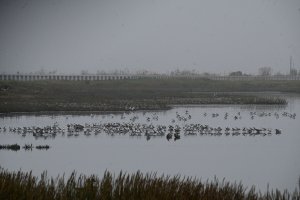
The hundreds and thousands
A quick view of that remnant of tidal marsh at Bayfront Park, Millbrae. Here it's partially hidden under a rising tide. Most visible of the "hundreds and thousands" are American Avocets standing in the shallows and (mostly, I think) Willets waiting out the tide along the shore. There were...- Doc Duck
- Media item
- american avocet recurvirostra americana tringa semipalmata willet
- Comments: 10
- Category: North America
-

A wetlands remnant
An informative sign told that the whole 2-mile stretch I'd just walked plus the next several miles of airport and industrial area had once been a vast tidal marsh, now mostly drained and "developed". But one patch does remain right where the trail is interrupted at the south end of the airport...- Doc Duck
- Media item
- american avocet northern shoveler recurvirostra americana spatula clypeata tringa semipalmata willet
- Comments: 8
- Category: North America
-
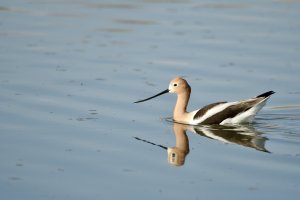
American Avocet
These little guys are just starting to come back after snow!!! Still don’t know how to pronounce their name!- Ghostborb
- Media item
- american avocet avocet
- Comments: 7
- Category: North America
-

American Avocet
First one I've seen. In a shallow pond with many other waders and ducks.- Ozprey1
- Media item
- american avocet frankfort recurvirostra americana south dakota usa.
- Comments: 10
- Category: North America
-
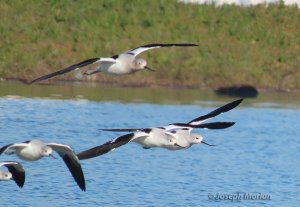
American Avocet
This attractive species has been increasing and expanding its range in San Francisco Bay. These are in non-breeding plumage showing a gray wash on their head and neck. Note the sharply upturned bill tips. I believe the two birds on the bottom right are females, but the one above is a male with a...- jmorlan
- Media item
- american avocet california recurvirostra americana usa
- Comments: 1
- Category: North America
-

He Went That a Way lol
A small flock of American Advocets visited last week. :)- Victor Vector
- Media item
- american avocet recurvirostra americana
- Comments: 5
- Category: North America
-

american avocet
- bievreJJ
- Media item
- american avocet california mountain view recurvirostra americana usa
- Comments: 13
- Category: North America
-

American Avocet
One of my favourite of the spring arrivals to our area.....this couple were spending a lot of time with bills underwater.- benoitjh
- Media item
- 12dt american avocet british columbia canada recurvirostra americana
- Comments: 3
- Category: North America
-

American Avocet.jpg
American Avocet (Recurvirostra americana) It appears to me that this avocet has a hurt foot/leg.- Stanley Jones
- Media item
- american avocet galveston island jamaica beach recurvirostra americana san luis pass texas usa
- Comments: 10
- Category: North America
-
American Avocet
This guy must have taken a wrong turn and showed up in Illinois this morning. Not the best picture but I was sure lucky enough to spot an avocet in northern IL this morning.- jrcummins84
- Media item
- american avocet avocet illinois usa wetland
- Comments: 1
- Category: North America
-
American Avocet
Now in breeding plumage showing rich cinnamon color to the head and neck. They usually forage by scything, sweeping their upcurved bill from side to side in the shallow water. However as seen here, they also find food on the bottom by dipping their whole head under the water. Females have the...- jmorlan
- Media item
- 1bb american avocet california recurvirostra americana usa video
- Comments: 2
- Category: North America
-

American Avocet
- AndyS56
- Media item
- 1bb american avocet bear river bear river migratory bird refuge recurvirostra americana usa utah
- Comments: 6
- Category: North America
-
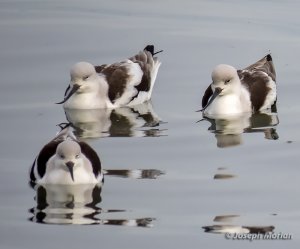
American Avocet
These long-legged waders are surprisingly good swimmers. Their feet are partly webbed and they can paddle in a sitting position with tail held up as seen here. These birds are In winter plumage showing a gray wash on their head and neck.- jmorlan
- Media item
- 1bb american avocet california millbrae recurvirostra americana usa
- Comments: 6
- Category: North America
-

american avocets
- bievreJJ
- Media item
- american avocet california recurvirostra americana usa
- Comments: 21
- Category: North America
-

american avocet
- bievreJJ
- Media item
- american avocet
- Comments: 15
- Category: North America
-

American Avocet
A colony of American Avocets seen along the Black Point Wildlife Drive, Merritt Island, Florida.- Proavis
- Media item
- american avocet florida
- Comments: 3
- Category: North America
-

American Avocet
I believe this is a male, not sure.Female bill is curved more?- Grobertson
- Media item
- american avocet
- Comments: 5
- Category: North America
-

American Avocet
A lifer for me. I tried to get closer but they took off.- ducbucln
- Media item
- american avocet
- Comments: 14
- Category: North America
-

Avocets Flying
These birds were flushed by some kid. Have every noticed if a boy see a bird he will always pick up a rock or stick and throw it at them. Must be an instinct carried over from the days when we had to hunt for dinner and lived in a cave. Of course I never did anything like that.- blue185jay
- Media item
- american avocet avocet recurvirostra americana
- Comments: 4
- Category: North America
-

Avocets Anyone?
We had quite a fallout of birds on my favorite lake yesterday. There were Avocets, Willets, Spotted Sandpipers and Semipalmated Plovers in one big flock. There were an estimated 250 Willets and 50 Avocets, with only a few of the others. Never saw so many in my life.- blue185jay
- Media item
- american avocet recurvirostra americana
- Comments: 1
- Category: North America
-
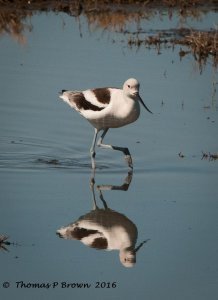
American Avocet
Not quite into breeding plumage, one of the very few Avocets we see here this far south on the Baja, this birds waded so gracefully for me, I just had to catch a shot like this!!- Thomas P Brown
- Media item
- american avocet la paz mexico shore birds
- Comments: 3
- Category: Central & South America & Mexico
-

American Avocet
What a storm we had yesterday! Pouring rain, thunder and lightning, trees knocked down, highways flooded, power out for several hours. So I didn't get any posting done, but I did get caught up on browsing, several days worth of photo editing, and started on my quilting homework. Today we have...- Doc Duck
- Media item
- american avocet
- Comments: 8
- Category: North America




